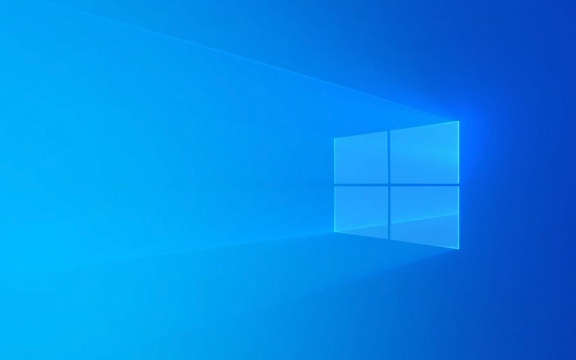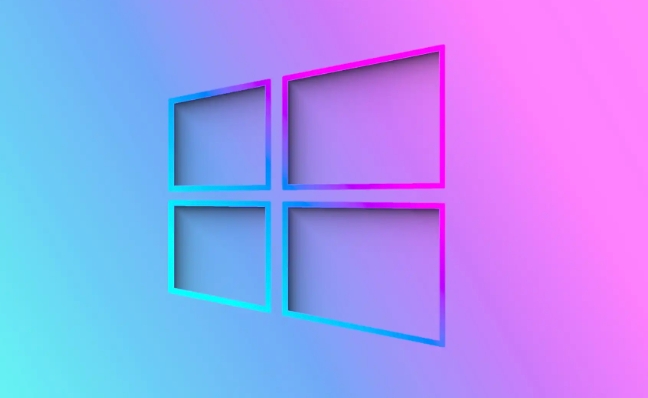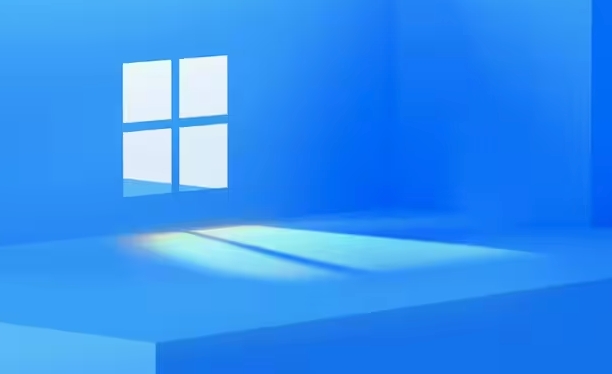When encountering the "The specified path does not exist" error, first confirm whether the path is entered correctly, whether it exists, and whether it has access rights. 1. Check whether the path is spelled correctly, including drive letters, spaces and case, and manually verify whether the path exists through the Explorer; 2. Confirm whether the network path or mapped drive is available, such as whether the UNC path is accessible and whether the network connection is normal; 3. If there are permission problems, try running the program as an administrator or checking the folder permission settings; 4. Check whether the path saved in the shortcut or registry is accurate, and make corrections if necessary. Following the above steps to troubleshoot this problem can usually be solved.

You encounter the error message "The specified path does not exist", which means that the system finds that the path does not exist when trying to access a path. This is common when running a program, installing software, or executing batch scripts. There are many reasons for this problem, but in most cases, the path is typo, the path itself is moved or deleted, or permission issues cause the path to be unrecognized.

Here are some common troubleshooting directions and solutions, suitable for ordinary users:

1. Check if the path is correct
The most common reasons are path input errors, such as extra space, missing drive letters (such as D:\), or misspelling the folder name.
- Inspection method:
- Manually open "This Computer" or Explorer, navigate to the target path to see if it exists
- If the command line error is reported, you can copy the path and paste it in the Explorer address bar to test it directly
- Note that although case does not affect Windows path recognition, the spelling must be completely consistent.
For example: If you type C:\Program Files\MyApp , but the actual installation directory is C:\Program Files (x86)\MyApp , this error will be reported.

2. Confirm that the path does exist (especially the network path)
Some programs will try to access a network path or map drive, and this error will also be triggered if that path has been removed, renamed, or the network is disconnected.
- Common scenarios:
- The mapped network drive is disconnected
- The UNC path is used (for example
\\server\share\file.exe) but the server is not available - Changes in the installation package path that the program depends on
Recommended operations:
- Try accessing this path manually in Explorer
- If it is a network path, confirm whether the network is normal or reconnect to the mapped drive
3. Insufficient permissions may also cause the path to be "invisible"
Although the path does exist, if the current user does not have access permissions, Windows sometimes directly prompts that the path does not exist, rather than a permission denied.
- Possible situations:
- Running programs that require administrator privileges using standard user accounts
- The folder permission has been modified, and the current user does not have permission to access it
Solution:
- Right-click on the program or command line tool and select "Run as administrator"
- If you are accessing a specific folder, right-click the folder → Properties → Security tab to see if the current user has read permission
4. Check path settings in the registry or shortcut
Sometimes this error comes from incorrect paths configured in the shortcut or registry key, especially when you migrate settings from an older version of the system or leave the residual configuration after uninstallation.
- Applicable scenarios:
- The "Start Location" path in the shortcut property is incorrect
- The old installation path is saved in the registry (commonly found in some old software)
Recommended operations:
- Right-click shortcut → Properties → Check whether the "target" and "start position" are correct
- If you are not sure about the risk of registry changes, do not modify it easily. You can use the system's own repair tool
Basically these common reasons. When encountering this prompt, first confirm whether the path exists, is correct, and has permissions, which can generally solve the problem. Not particularly complicated, but it is easy to ignore details, such as a slash or drive letter issue.
The above is the detailed content of The specified path does not exist Windows. For more information, please follow other related articles on the PHP Chinese website!

Hot AI Tools

Undress AI Tool
Undress images for free

Undresser.AI Undress
AI-powered app for creating realistic nude photos

AI Clothes Remover
Online AI tool for removing clothes from photos.

Clothoff.io
AI clothes remover

Video Face Swap
Swap faces in any video effortlessly with our completely free AI face swap tool!

Hot Article

Hot Tools

Notepad++7.3.1
Easy-to-use and free code editor

SublimeText3 Chinese version
Chinese version, very easy to use

Zend Studio 13.0.1
Powerful PHP integrated development environment

Dreamweaver CS6
Visual web development tools

SublimeText3 Mac version
God-level code editing software (SublimeText3)

Hot Topics
 Building Immutable Objects in PHP with Readonly Properties
Jul 30, 2025 am 05:40 AM
Building Immutable Objects in PHP with Readonly Properties
Jul 30, 2025 am 05:40 AM
ReadonlypropertiesinPHP8.2canonlybeassignedonceintheconstructororatdeclarationandcannotbemodifiedafterward,enforcingimmutabilityatthelanguagelevel.2.Toachievedeepimmutability,wrapmutabletypeslikearraysinArrayObjectorusecustomimmutablecollectionssucha
 Building RESTful APIs in Java with Jakarta EE
Jul 30, 2025 am 03:05 AM
Building RESTful APIs in Java with Jakarta EE
Jul 30, 2025 am 03:05 AM
SetupaMaven/GradleprojectwithJAX-RSdependencieslikeJersey;2.CreateaRESTresourceusingannotationssuchas@Pathand@GET;3.ConfiguretheapplicationviaApplicationsubclassorweb.xml;4.AddJacksonforJSONbindingbyincludingjersey-media-json-jackson;5.DeploytoaJakar
 css dark mode toggle example
Jul 30, 2025 am 05:28 AM
css dark mode toggle example
Jul 30, 2025 am 05:28 AM
First, use JavaScript to obtain the user system preferences and locally stored theme settings, and initialize the page theme; 1. The HTML structure contains a button to trigger topic switching; 2. CSS uses: root to define bright theme variables, .dark-mode class defines dark theme variables, and applies these variables through var(); 3. JavaScript detects prefers-color-scheme and reads localStorage to determine the initial theme; 4. Switch the dark-mode class on the html element when clicking the button, and saves the current state to localStorage; 5. All color changes are accompanied by 0.3 seconds transition animation to enhance the user
 python parse date string example
Jul 30, 2025 am 03:32 AM
python parse date string example
Jul 30, 2025 am 03:32 AM
Use datetime.strptime() to convert date strings into datetime object. 1. Basic usage: parse "2023-10-05" as datetime object through "%Y-%m-%d"; 2. Supports multiple formats such as "%m/%d/%Y" to parse American dates, "%d/%m/%Y" to parse British dates, "%b%d,%Y%I:%M%p" to parse time with AM/PM; 3. Use dateutil.parser.parse() to automatically infer unknown formats; 4. Use .d
 css dropdown menu example
Jul 30, 2025 am 05:36 AM
css dropdown menu example
Jul 30, 2025 am 05:36 AM
Yes, a common CSS drop-down menu can be implemented through pure HTML and CSS without JavaScript. 1. Use nested ul and li to build a menu structure; 2. Use the:hover pseudo-class to control the display and hiding of pull-down content; 3. Set position:relative for parent li, and the submenu is positioned using position:absolute; 4. The submenu defaults to display:none, which becomes display:block when hovered; 5. Multi-level pull-down can be achieved through nesting, combined with transition, and add fade-in animations, and adapted to mobile terminals with media queries. The entire solution is simple and does not require JavaScript support, which is suitable for large
 VSCode settings.json location
Aug 01, 2025 am 06:12 AM
VSCode settings.json location
Aug 01, 2025 am 06:12 AM
The settings.json file is located in the user-level or workspace-level path and is used to customize VSCode settings. 1. User-level path: Windows is C:\Users\\AppData\Roaming\Code\User\settings.json, macOS is /Users//Library/ApplicationSupport/Code/User/settings.json, Linux is /home//.config/Code/User/settings.json; 2. Workspace-level path: .vscode/settings in the project root directory
 css full page layout example
Jul 30, 2025 am 05:39 AM
css full page layout example
Jul 30, 2025 am 05:39 AM
Full screen layout can be achieved using Flexbox or Grid. The core is to make the minimum height of the page the viewport height (min-height:100vh); 2. Use flex:1 or grid-template-rows:auto1frauto to make the content area occupy the remaining space; 3. Set box-sizing:border-box to ensure that the margin does not exceed the container; 4. Optimize the mobile experience with responsive media query; this solution is compatible with good structure and is suitable for login pages, dashboards and other scenarios, and finally realizes a full screen page layout with vertical centering and full viewport.
 Full-Stack Web Development with Java, Spring Boot, and React
Jul 31, 2025 am 03:33 AM
Full-Stack Web Development with Java, Spring Boot, and React
Jul 31, 2025 am 03:33 AM
Selecting the Java SpringBoot React technology stack can build stable and efficient full-stack web applications, suitable for small and medium-sized to large enterprise-level systems. 2. The backend uses SpringBoot to quickly build RESTfulAPI. The core components include SpringWeb, SpringDataJPA, SpringSecurity, Lombok and Swagger. The front-end separation is achieved through @RestController returning JSON data. 3. The front-end uses React (in conjunction with Vite or CreateReactApp) to develop a responsive interface, uses Axios to call the back-end API, and ReactRouter






